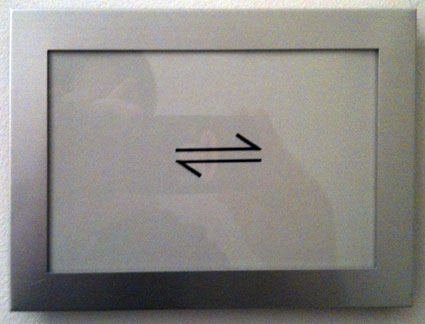Alicia’s War Story: Don’t hate on a tinkler

Alicia Dornadic is a design researcher in the San Francisco Bay Area.
Going to someone’s home for the first time to interview them, especially in an unfamiliar culture and language, can be awkward. Showing up with two researchers, a cameraman and a couple clients in tow – all of whom are over-caffeinated and in need of a bathroom break – can make for a circus act. These were three-hour long interviews, too. So, despite our best efforts to arrange feeding and peeing times before getting to the person’s home, we usually all had to pee at some point during the interview. But our translator was the absolute queen of tinkling. The first day I was understanding. “Maybe she’s sick or nervous,” I thought. She would take two to four breaks during each interview, which left the rest of us smiling and pointing at things dumbly, trying to make conversation in her absence. By the end of the week, my patience was shot. I was ready to strap some adult diapers on her. I would glower at her every time she asked for water, tea, or a soda. “Really?” I thought, my eyes on fire, “Should you really be having that?” I’m not proud of this. But I couldn’t help being annoyed.
Finally, karma came to bite me on the ass. It was at the end of a long interview at the end of a long day, and I broke down and asked if I could use the restroom. Our host pointed to it, and I stumbled inside, missing the 2-inch step down into it. There wasn’t a lot of light in the bathroom, and it was cluttered. I couldn’t find a switch. But no matter. I go. I reach for the toilet paper, and BOOM! CRASH! I take down the entire metal toilet paper rack off the wall, and it crashes onto the tiled floor. It was too dark to see how to fix it, so I had to come out and explain what I had done and apologize. Not only that, but my explanation and apology had to be translated! Translated and explained to two researchers, a cameraman, a couple of clients and our participant. It ended up not being a big deal, but I was embarrassed. And I felt guilty for all my negative thoughts towards our translator. As much as I was annoyed at our tinkler friend, at least she didn’t break anything.
 My local cafe offers a small selection of lovely creams and lotions on the back of the toilet tank. I react thusly: “Ewwwww.” It’s one thing to put this in your home bathroom, or maybe in your office, where there’s a known and finite set of users. But this is a cafe along the highway. You don’t know who else has been using it, touching it, or not-washing-their-hands-and-touching-it! Or worse, I’ve seen some of the people that come in there and I do know who’s been touching it. Suffice to say that I do not want to be sharing cosmeceuticals with them! It’s the
My local cafe offers a small selection of lovely creams and lotions on the back of the toilet tank. I react thusly: “Ewwwww.” It’s one thing to put this in your home bathroom, or maybe in your office, where there’s a known and finite set of users. But this is a cafe along the highway. You don’t know who else has been using it, touching it, or not-washing-their-hands-and-touching-it! Or worse, I’ve seen some of the people that come in there and I do know who’s been touching it. Suffice to say that I do not want to be sharing cosmeceuticals with them! It’s the  The fitting rooms in Old Navy have labelled hooks to assist you in categorizing your prospective purchases. It’s what we do when trying on clothes anyway, and while it’s not a complete solution (e.g., where’s the place to put the clothes you are already wearing?), there’s something charming about how it acknowledges your process. Also, those arrows bring a real dynamic energy to a static aspect of the task. Small details, but fun. /SP
The fitting rooms in Old Navy have labelled hooks to assist you in categorizing your prospective purchases. It’s what we do when trying on clothes anyway, and while it’s not a complete solution (e.g., where’s the place to put the clothes you are already wearing?), there’s something charming about how it acknowledges your process. Also, those arrows bring a real dynamic energy to a static aspect of the task. Small details, but fun. /SP
 I spotted this sad scene on the sidewalk in front of our office. First I thought of the little girl who lost her shoe and would be upset, perhaps even scolded by her mom. And then I thought about the mother, recalling my own mothering moments of frustration realizing that my son or I had lost something of his along the way. And then I thought of the
I spotted this sad scene on the sidewalk in front of our office. First I thought of the little girl who lost her shoe and would be upset, perhaps even scolded by her mom. And then I thought about the mother, recalling my own mothering moments of frustration realizing that my son or I had lost something of his along the way. And then I thought of the 



































